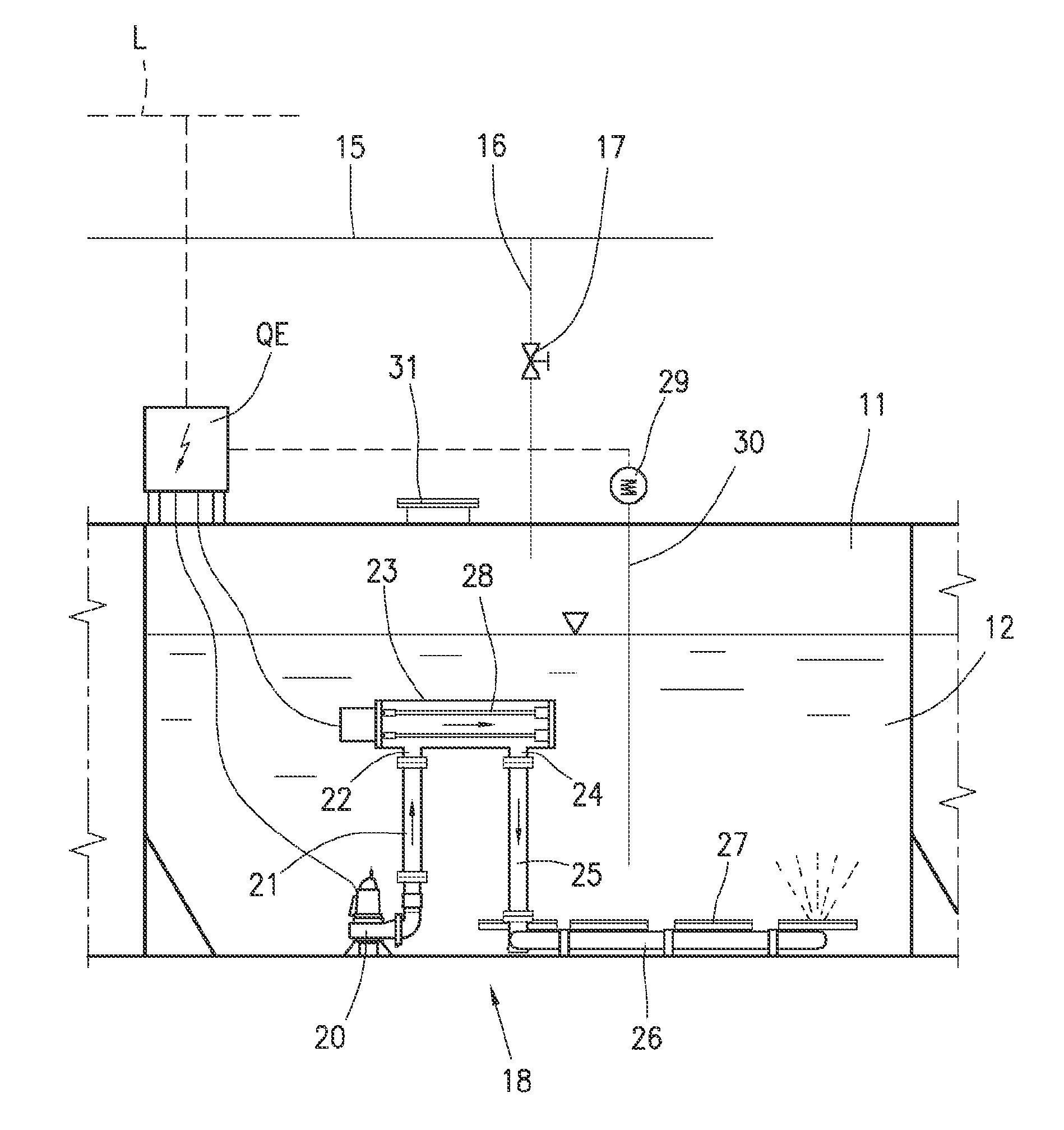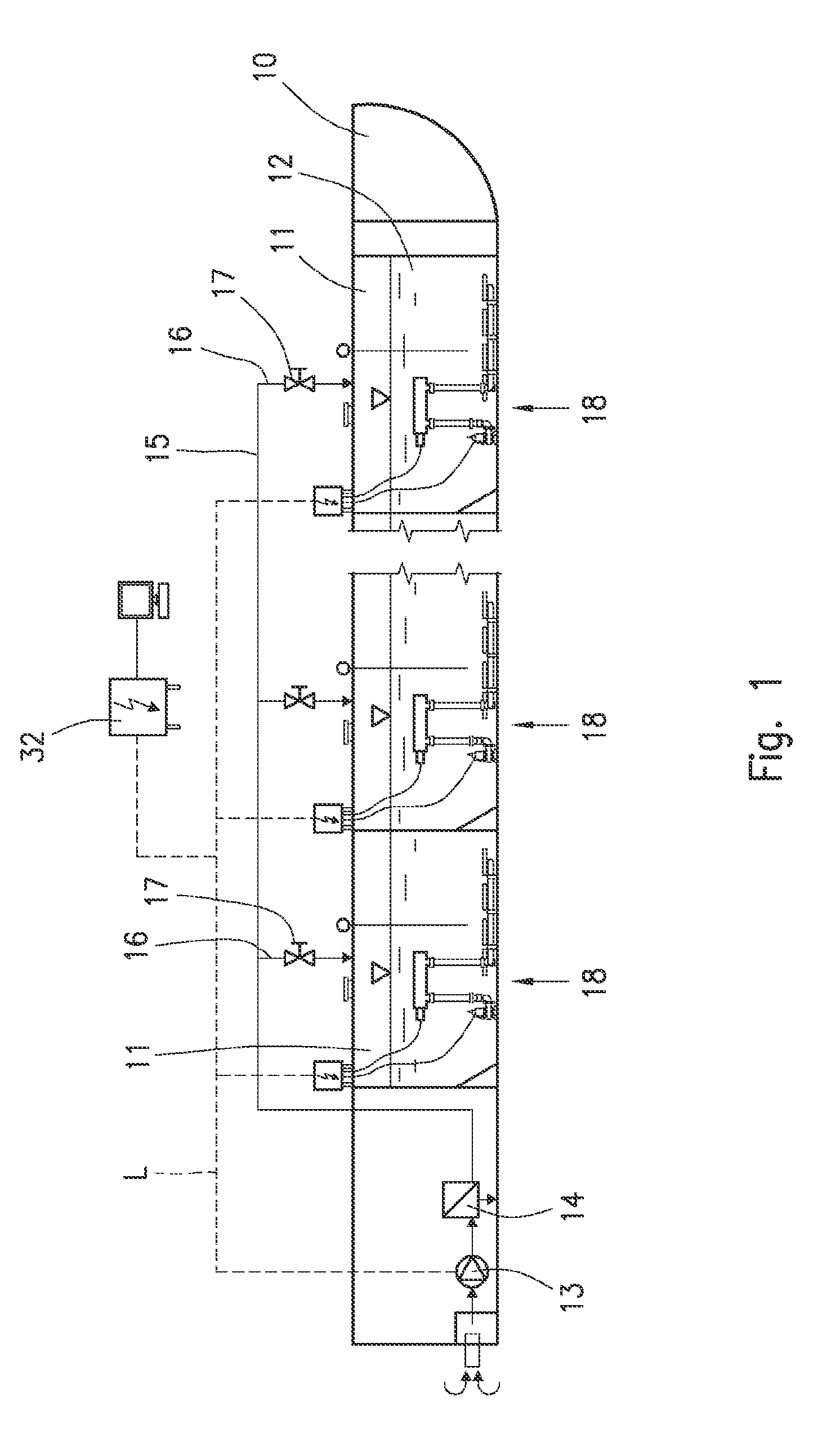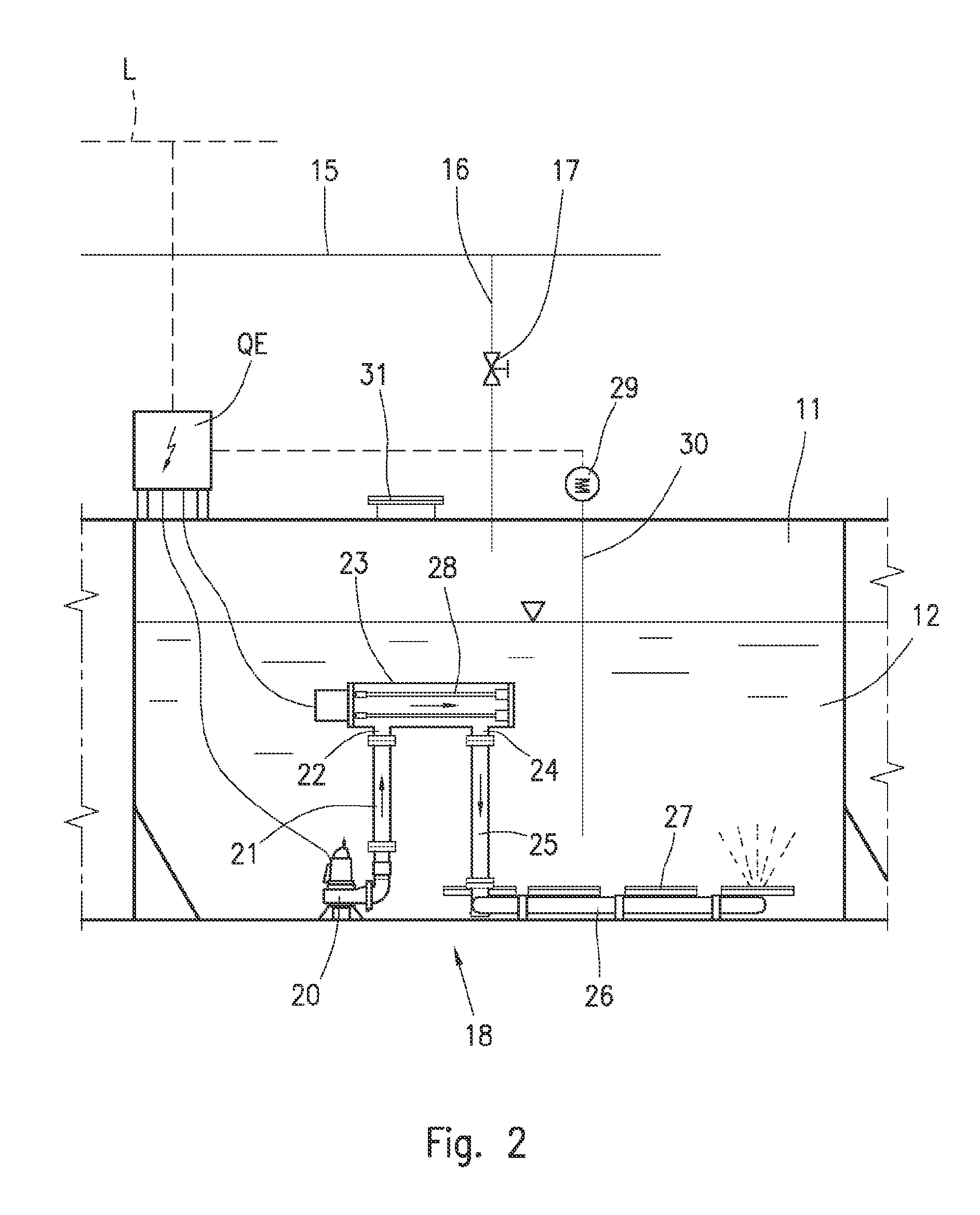Method and a modular system for onboard treatment of ballast water
a ballast water and modular technology, applied in the direction of gravity filters, feed/discharge of settling tanks, self-bailing equipment/scuppers, etc., can solve the problems of generating potentially noxious conditions for the receiving environment, and reducing the overall dimension , the effect of minimising the treatment period
- Summary
- Abstract
- Description
- Claims
- Application Information
AI Technical Summary
Benefits of technology
Problems solved by technology
Method used
Image
Examples
Embodiment Construction
[0048]In FIG. 1, a generic ship is indicated by the reference number 10, for example a cargo for carrying goods, or a passenger ship, comprising a plurality of water storage tanks 11 designed for being partially and / or fully filled with an amount of ballast water 12, to be treated and sterilised according to known standard procedures conforming to national or IMO legislations.
[0049]The ballast water 12, sucked from an external environment by one or more pumping units 13, is loaded into the single storage tanks 11 by a filtering unit 14, configured for retaining sucked sediments and possible seaweed and sea organisms, by a main water distribution piping 15 and by branched pipes 16, each of said branched pipes 16 being provided with a control valve 17.
[0050]As shown in FIG. 1 and the enlarged detail of FIG. 2, a water recirculation and UV sterilising apparatus or device, generally indicated by reference number 18, is provided inside each storage tank 11, by which recirculation and UV ...
PUM
| Property | Measurement | Unit |
|---|---|---|
| residual time | aaaaa | aaaaa |
| sailing time | aaaaa | aaaaa |
| time | aaaaa | aaaaa |
Abstract
Description
Claims
Application Information
 Login to View More
Login to View More - R&D
- Intellectual Property
- Life Sciences
- Materials
- Tech Scout
- Unparalleled Data Quality
- Higher Quality Content
- 60% Fewer Hallucinations
Browse by: Latest US Patents, China's latest patents, Technical Efficacy Thesaurus, Application Domain, Technology Topic, Popular Technical Reports.
© 2025 PatSnap. All rights reserved.Legal|Privacy policy|Modern Slavery Act Transparency Statement|Sitemap|About US| Contact US: help@patsnap.com



